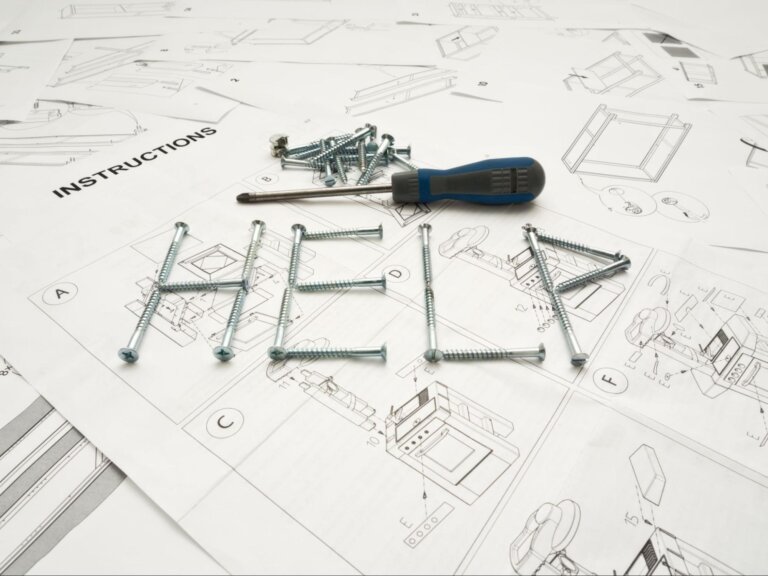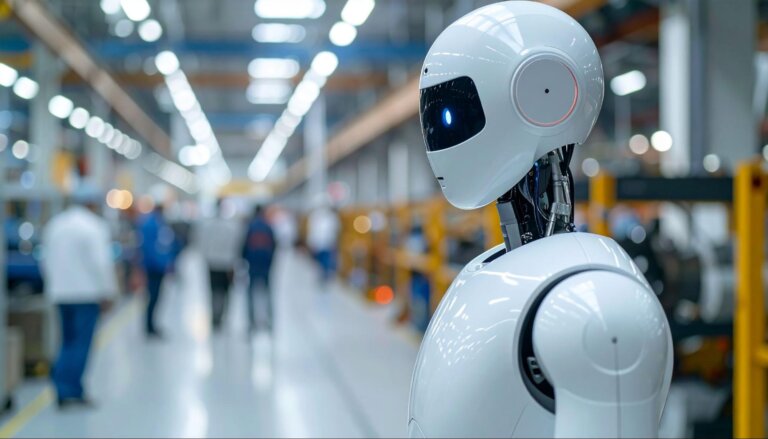Time to read: 8 min
You know those hypnotic GoPro videos of skateboarders flying down flights of stairs as if they had wings, surfers gliding along massive waves, and James Stewart killing it out on the dirt? You can’t just get a GoPro camera and expect to get that kind of quality right out of the box. You need a stabilizer to smooth out all those knocks and bumps.
Because, let’s face it, none of us are born Steadicam operators. And the last time we checked, gravity is still alive and well on planet Earth, and it hits recorded video pretty hard when skateboards, surfboards, and motorbikes get into the mix.
Enter Aeon, the David to Steadicam’s Goliath. Lightweight, sleek, and incredibly easy to use, it’s barely out of its Indiegogo diapers and already reinvigorating an ancient industry.

A Timeless Name
The first thing you notice about Aetho, the company behind Aeon, is its name. It’s pronounced /’ay-THo/, and is derived from a Latin word that means “timeless.” When we asked co-founders Ian Nott and Harrison Lee about that, the passion that has been driving this young company bubbled over.
“When you think about great movies, great TV shows, they have this timeless element,’ says Harrison. “We’re not interested in the low-quality disposable content you see so much of out there. We want to give people the ability to create timeless quality.”
“We wanted people to have a relationship with their stabilizer,” adds Ian, “not for it to be just another gadget they have to carry around.”
Let’s peel back the curtain.
Rewind to the Beginning
Harrison first met Ian in March of 2014 when he was looking for a new startup to join. A friend introduced him to the head of innovation at the Savannah College of Art and Design, where Ian was studying. The head of innovation immediately thought of Ian, the two met, and things ramped up pretty quickly from there. By July of that year, they had the company set up and hit the ground running.
“Before Harrison and I met,” says Ian, “I was tooling about with drones as a hobbyist, building them, crashing them, fixing them. I saw people coming up with new products and services in this space, and started exploring what I could work on. Then, seeing the gray area that the FAA was operating in and the potential liability concerns that came with that, I figured this is not the best move for a college kid with no money. But there was lots of innovation, lots of people helping each other in online forums figuring out how to put together various pieces of technology to get a stable video shot with a drone when it’s in the air bouncing around. That’s what got me thinking about the whole stabilization issue.”
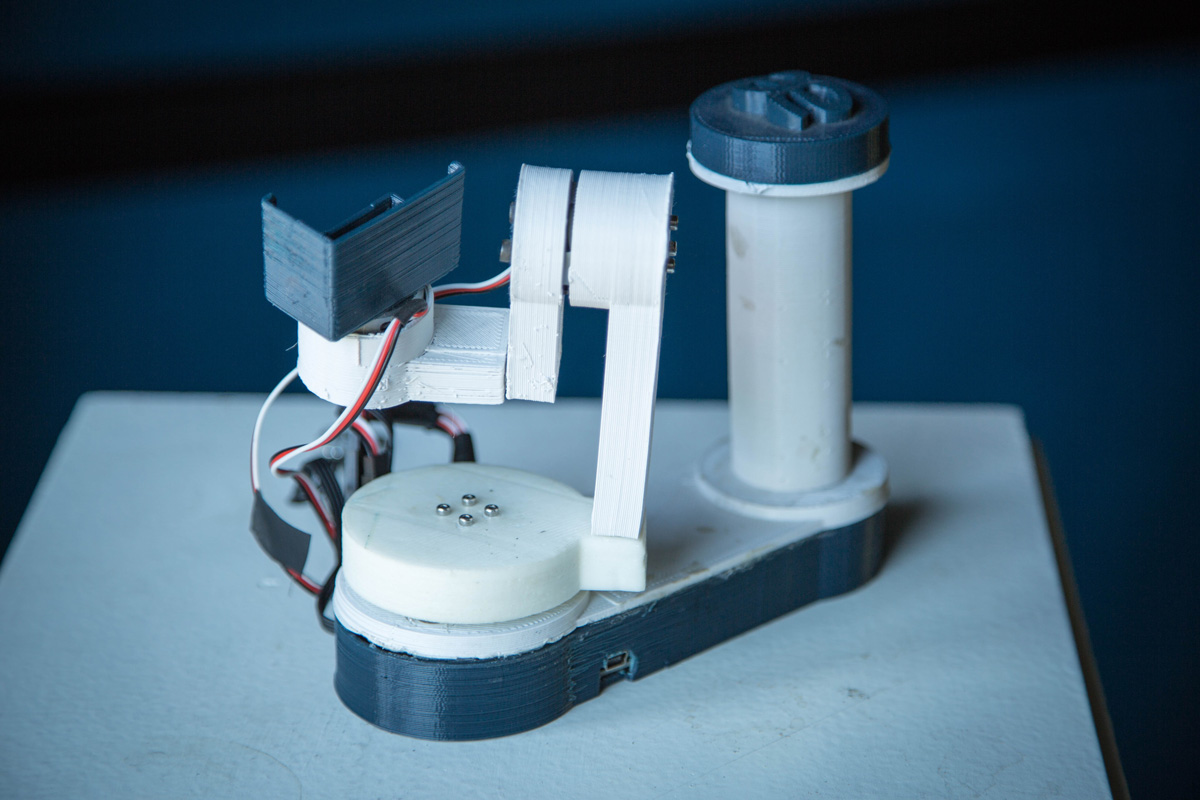
Brushless gimbal stabilization (see below for deets on that) was starting to make a lot of waves around that time. “Most of the big productions use brushless gimbals now,” says Ian. “Before that, they used servos and gearing, and that made the motors slow to react. They had kind of a ‘step’ to them rather than a continuous smooth motion. Brushless changes the whole game.”
The opportunity lay in selling affordable devices that cost less to produce to more people, rather than fewer high-priced systems to top professionals
Fascinated with the potential of brushless gimbals, Ian put them not just on drones but also on handheld cameras, like the large SLR cameras, and that’s where he really saw a difference. “I was amazed,” he says. “So I went back to what brought me to school in the first place: Industrial Design. Harrison and I explored ways we could apply this new technology to an actual market.”
The pair eventually chose the world of GoPro. “We found the GoPro demographic to be young, lifestyle-oriented, very active, and for us the opportunity lay in selling affordable devices that cost less to produce to more people, rather than fewer high-priced systems to top professionals.”
“We realized we worked great together,” says Harrison. “Ian is all about design and engineering. My background is in marketing, mostly on the software side. I was looking for a startup that was either disruptive or could fill a void in the marketplace, and I felt this had both. It was the fact that we had the same vision but complementary strengths that really balanced us out.”
So What’s a Camera Gimbal?
A gimbal is a support mechanism that enables the rotation of an object about a single axis. It’s nothing new: Greek inventor Philo talked about it back in the two hundreds B.C. (yes, as in over two thousand years ago, except back then they used it for really cool ink pots rather than video). Three-axis gimbals used in stabilization systems for cameras allow the lens to maintain a relatively level position as the operator moves the camera, whether intentionally or not, for example when the operator walks or runs with the subject s/he’s recording.
You see those radiating curves Aeon has? Most camera stabilizers before this were basically ‘gimbal-on-a-stick’
The type of gimbal that Aeon uses is called the “brushless gimbal,” which balances the center weight—in this case a camera—on three centers of gravity with three separate brushless motors. A proprietary software sensor fixed to the camera reads the camera’s motion thousands of times a second and automatically corrects each movement by rotating the appropriate motor in the opposite direction.
“There’s no noise, no vibration, zero resistance, zero friction on each axis,” says Ian. “The camera itself appears to stay magically still but what’s really happening is all these minute corrections thousands of times a second so you don’t see it.”
Hybrid Stabilization: Mechanics Marry Software
The well-known Steadicam used on Hollywood movie sets for so long is a purely mechanical rig. Not a shred of code here. Traditionally, Steadicam operators had to be physically robust, to be able to carry the sheer weight of the device, and train for years to master those smooth dolly-like shots. For years, that was the best that non electronic stabilization systems could do.
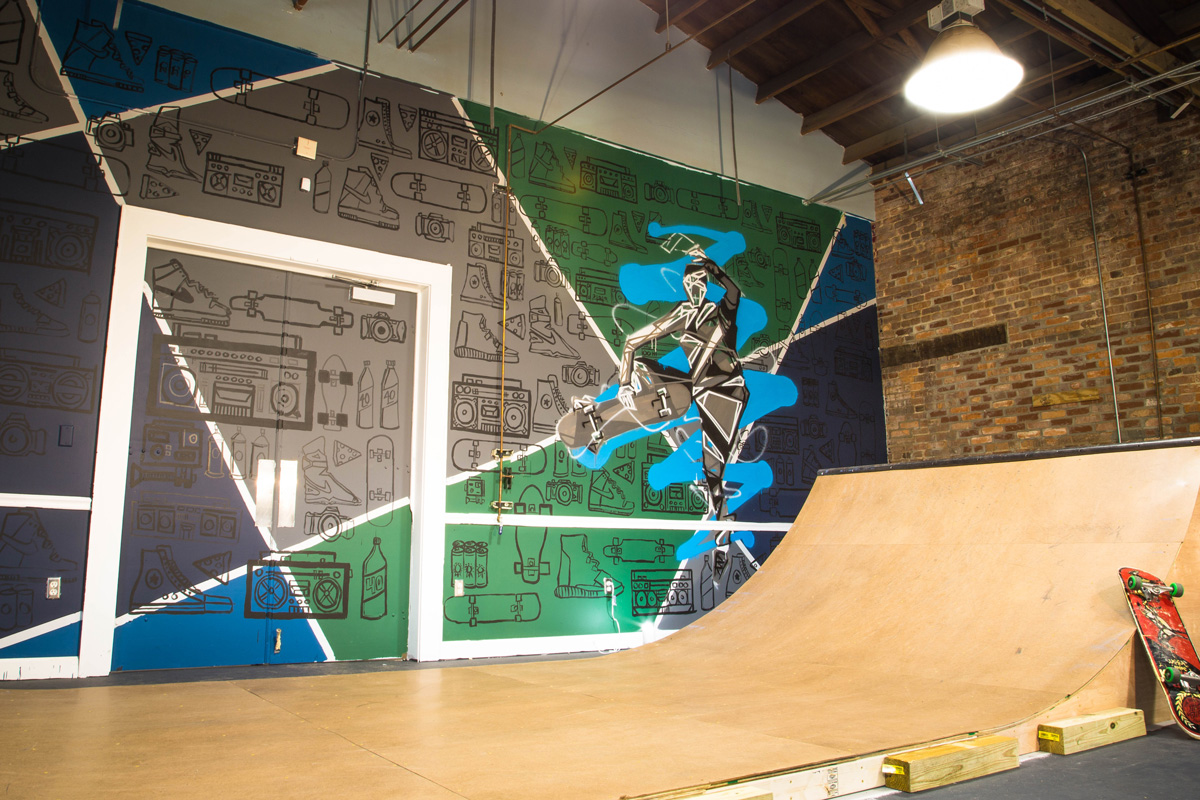
All that work is being swept under the digital carpet. The size, complexity, and learning curve of the Steadicam, says Ian, present rather high barriers to entry (er, shot quality), as opposed to a system with dynamic intelligence that fuses hardware and software like Aeon. Beams Ian, “You can give it to a 5-year-old kid and get footage that rivals a professional with a Steadicam. It leapfrogs image stabilization technologies.”
UX, UX, UX
Everyone talks about UX but not everyone gets it right—and that’s true as much for the hardware world as it is for software. It takes a special blend of design, psychology, materials and functionality, for which there is no formula. It also doesn’t matter whether you’re designing something no one’s ever done before—admittedly a rare thing—or redesigning a technology two thousands years old. It just has to click.
It has to have a perfect center of gravity, and the ergonomics have to work for anyone, of any shape and size
Aeon certainly seems to be hitting all the right buttons. From performing arts students to pro skateboarders, users are discovering new worlds of possibility.
But what is it that’s so different about Aeon from the other stabilizers? With its compact, curved design, Aeon has a smaller footprint than just about any other camera gimbal on the market, and lets the user virtually become one with the camera.
“We gave ourselves an extra super-hard challenge,” says Ian, “because we wanted an amazing experience for the user.” He’s dead serious about the superlative adjectives. “You see those radiating curves Aeon has? Most camera stabilizers before this were basically ‘gimbal-on-a-stick.’ So we looked at the essence of what a gimbal is—it’s this orbital, rotational device. We said, ‘let’s play up that design, play on that rotational element.’ It has to have a perfect center of gravity, and the ergonomics have to work for anyone, of any shape and size.”
Combining all that was extremely difficult, the co-founders say. But instead of slapping the core gimbal technology onto a stick or handle the way most of their competitors do, Aetho connects the user to the technology through design. The radius on the outer handle, for example, is dictated by the inner radii of the gimbal mechanism itself.
“This approach,” says Ian, “has benefited the product not just visually, but functionally as well, because you feel much more connected to the camera and to the device.”
From Vision to Prototype to Product
To give you a sense of just how challenging it was to achieve the final version of Aeon, the Aetho team produced a little over 300 design revisions, over a span of about nine months. They did it one 3D-printed part at a time.
But even at the prototype stage, explains Harrison, they still needed to produce highly tailored parts to some very precise specifications, especially for the centers of gravity of the gimbal system.
The rough prototyping was done with desktop printers, and the major milestone iterations were done with SLA printers.
“SLA printing involves far more layers, which gives you a much more accurate result,” explains Ian. “It can put very complex parts into place, and you end up with a high-end visual model.”
The final product, the version users will take to the streets—and sand dunes and waves and the tops of glaciers—will be injection molded plastic.
“The device also needed to take a lot of abuse and breaking, so we produced 30 units of the final design, and our beta testers beat them to high hell and back. We got a ton of useful feedback this way, especially for all the final details before we locked things down.”
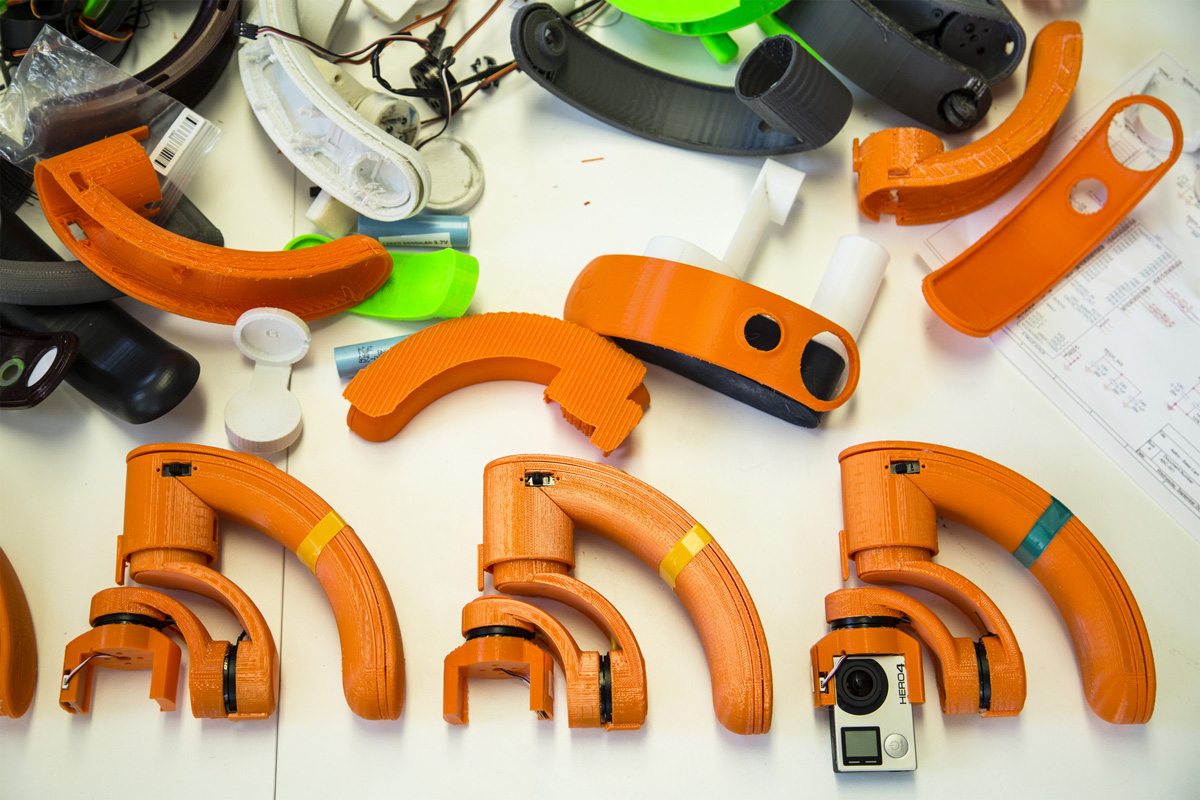
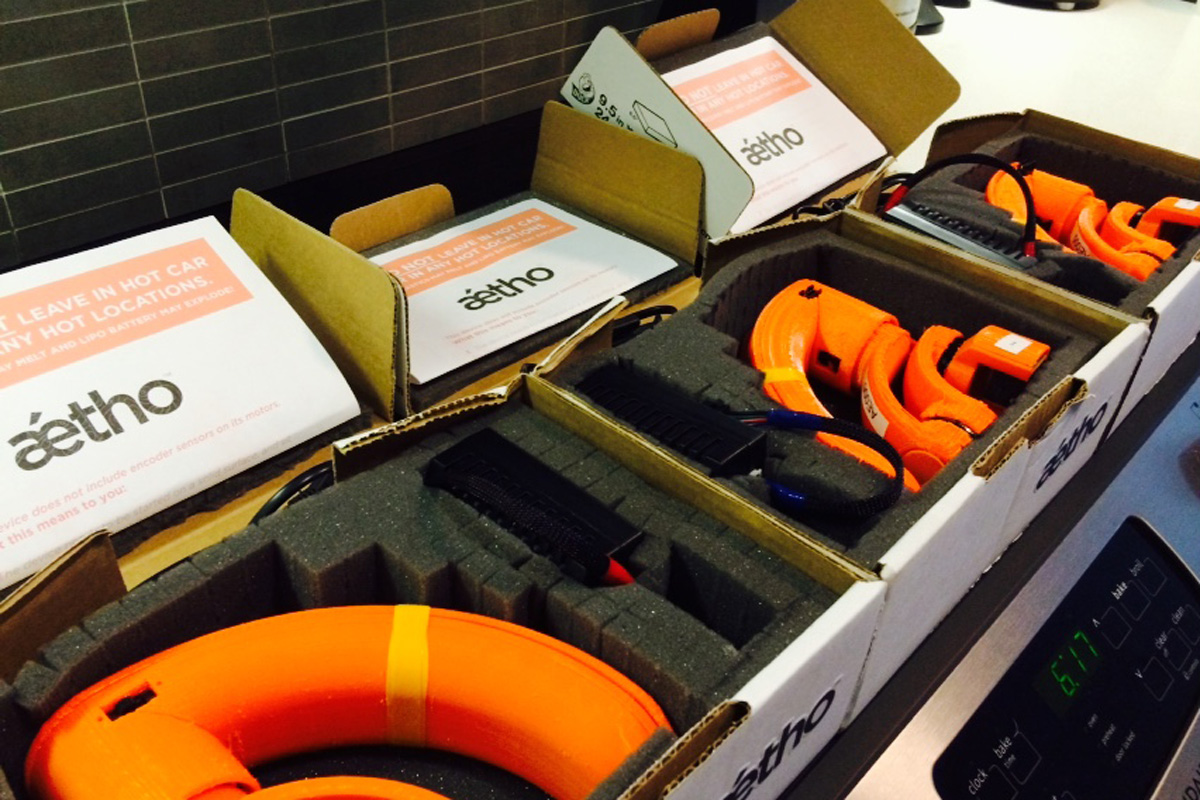
On the functionality and software side, says Ian, “we tested all kinds of different things. Other gimbals, for example, couldn’t track the ultra high speed moves of street skaters, so we tweaked the high speed traction abilities of the algorithms until we made that possible. Ultimately, we nailed a software configuration that worked really well. And that’s another important market differentiator—the ability to capture high-speed movement along an unpredictable path or direction.”
Stable Horizon
To reinvent a technology that’s been around for two thousand years is no mean feat, especially when you’re not the first one to try, by a long shot. The lesson to be learned from Aetho is that it takes nothing less than a rigorous commitment to prototyping and testing, and more prototyping and testing, to produce the kind of agility, user-centered design, and stabilization capability that Aeon offers.
While it still remains to be seen how well the young company will handle scaling to satisfy what they hope will be massive user demand, the initial signals that they’ve got a good chance at success are strong.
Philo the Greek would certainly have been proud.









